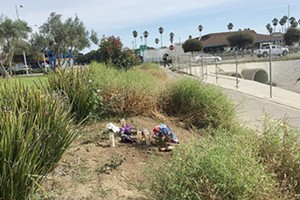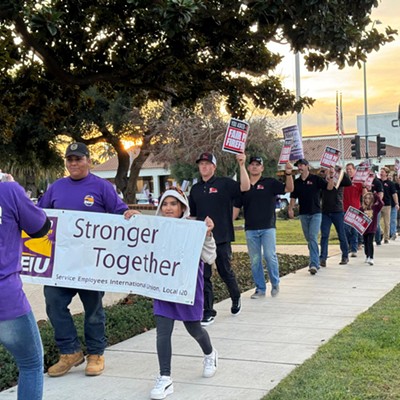Lompoc Police Chief Pat Wash heard the incident on his radio.
According to a county District Attorney’s report, the chief rushed to the scene along the bike path next to the Embassy Suites hotel on North H Street. There, Lompoc Police Cpl. Charles Scott had shot Michael Ducaine Giles, 27, twice. Giles died from his wounds later at the Lompoc Valley Community Hospital.
The DA’s report, released May 9, said the shooting was warranted, as Giles had held a knife with a 5-inch blade upright at the officer, who feared for his life.

According to the report, Walsh grabbed a pair of handcuffs from another Lompoc police officer’s belt and “began placing handcuffs” on Giles.
Handcuffing a suspect who was just shot may seem excessive or unnecessary in the eyes of the public, but local police say it’s a common practice that’s used for a variety of reasons.
When the Sun reached out to Walsh, the first thing he expressed was his condolences to Giles’ family. It’s the second officer-involved shooting at the department since Walsh became Lompoc police chief in September 2014.
“It’s always a tragedy when life is taken and it’s tragic for the family and the officer,” Walsh said. “It’s just sad.”
Walsh said that handcuffing suspects in an officer-involved shooting situation is an industry-wide standard. Based on his training and experience, Walsh said, certain instances require such a practice, like when a suspect is high on drugs and doesn’t appear to be immediately affected by their wounds.
Many times, Walsh added, the officer can’t tell if he or she shot the suspect.
“You secure the individual as quickly as you can,” Walsh said. “Being shot or stabbed is no barometer for how you are and how you’re going to act.”
However, Walsh added that an officer’s actions depends on the individual and what’s happening in the immediate aftermath of a shooting. The Santa Maria Police Department’s (SMPD) Chief Ralph Martin told the Sun that he agrees.
Martin’s department experienced an officer-involved shooting in July 2016. In that case, 31-year-old Javier Gaona was shot more than a dozen times by several SMPD officers and later died. Gaona was also handcuffed by SMPD officers before emergency medical personnel took over and tried to save him.
“I’ve seen it done both ways,” Martin said on the handcuffing practice. “A supervisor can step in and say, ‘Do not do that.’”
Often, a police officer won’t handcuff a suspect who’s been shot if the person is incapacitated and first aid needs to be delivered immediately, Martin said, adding that officers are also first responders who are trained to deliver life-saving aid. And to do this immediately after shooting a suspect can be difficult thing, Martin added.
“There’s a tremendous amount of emotion flowing at that particular time,” Martin said.
Although entirely discretionary, Martin said handcuffing a suspect in those situations is a fairly standard practice. The practice could stem from the U.S. Department of Justice (DOJ), which often conducts research for developing law enforcement practices.
The DOJ conducted a project known as Preventing Violence Against Law Enforcement and Ensuring Officer Resilience and Survivability (VALOR) and released a guide on officer-involved shootings in 2016. The guide states that officers “should handcuff all suspects, unless doing so would hinder the performing of emergency life-saving activities,” and “should never assume that because a subject has been shot or otherwise incapacitated, he or she is unable to take aggressive action.”
Bob Sanger, a Santa Barbara County-based civil rights attorney, acknowledges that handcuffing suspects after they’ve been shot by police is a legitimate practice. However, he said that it should be avoided if doing so will contribute to their injuries.
From a civil rights litigation standpoint, Sanger said, the mere fact that a suspect is handcuffed in this way isn’t automatically going to be a basis for legal action. The act has to be proven willful, he said, like handcuffing gratuitously or if what the officer did was bad.
Instances that may be inappropriate to handcuff an injured suspect, Sanger said, include handcuffing and placing them on their stomach. This, he said, could have an affect on their breathing and possibly asphyxiate them.
“They should avoid aggravating an injury and avoiding death by handcuffing someone needlessly,” Sanger told the Sun. “Police officers aren’t out there to impose harm on anybody.”
Staff Writer David Minsky can be reached at [email protected].










